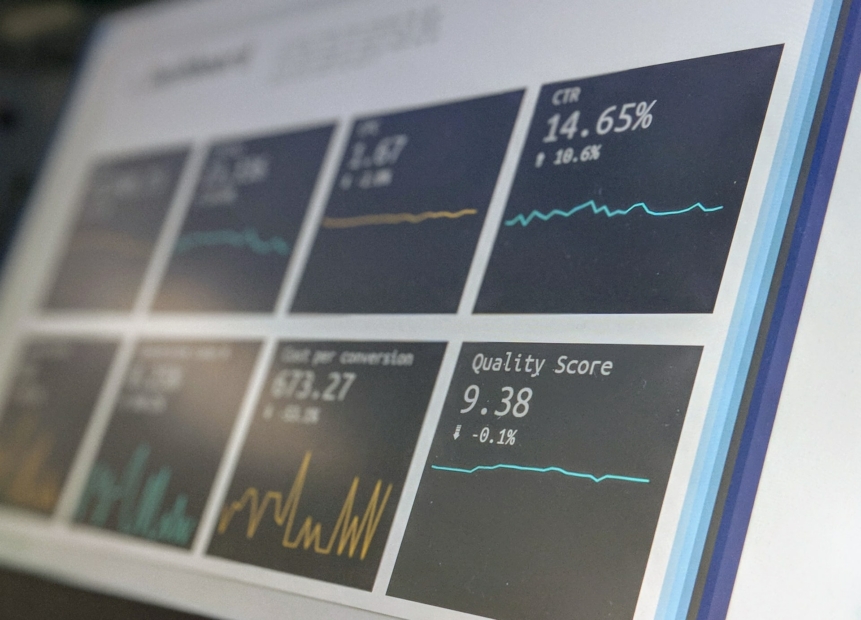To take account of demographic change, the pension system will have to be adjusted in the future. These changes mainly concern the financing of pensions. However, it remains a challenge to maintain the current pension level in the 1st and 2nd pillars in Switzerland’s 3-pillar system.
To ensure a secure financial retirement, it is therefore crucial that individuals take personal responsibility and plan accordingly. Voluntary saving in the 3rd pillar has therefore become a cornerstone of personal retirement planning.
Pillar 3a serves as a solution to close pension gaps in the 1st and 2nd pillars. However, the large number of investment options makes the decision a complex one. We have therefore compared the various pillar 3a investments for you in terms of potential returns, risks and fees. The comparison will help you find your personal investment strategy.
Contents
- 1 The most important facts in brief
- 2 Pillar 3a comparison: Here’s what you should look out for when making a comparison
- 3 The pillar 3a account with interest: You can count on this
- 4 How a pillar 3a investment performs
- 5 The equity component – return for pension provision
- 6 Providers, products, risk or taxes: Other points that are important when comparing pillar 3a offerings
- 7 Pillar 3a in comparison: Are there alternatives?
The most important facts in brief
- Pillar 3a is the private pension plan in Switzerland and is becoming increasingly important.
- Tax savings are achieved with payments into pillar 3a pension products.
- 3a interest accounts currently offer about 0.40 percent interest (as of 03/2023).
- A comparison of investment products should take into account term, performance and fees.
- With a higher risk, higher returns can be achieved in the long term.
- Experience shows that competent asset managers with an individual investment strategy offer an optimal mix of risk and return.

Pillar 3a comparison: Here’s what you should look out for when making a comparison
Whether savings account, securities savings or fund account: If you are looking for the best investment for you, you first need to know which points to compare. These differ depending on the type of investment.
Savings account
With some providers, opening a pillar 3a savings account is generally only possible if other products are taken out with the bank (such as a private account). In addition, regional banks sometimes only offer 3a savings accounts to customers who live in the bank’s region.
In addition, the following points should be taken into account when making a comparison:
- Interest: In general, a savings account is a safe investment, but the returns are very low. Nevertheless, the comparison is worthwhile, because the interest rates for 3a savings accounts range from about 0.10 to 1 percent.
- Account fees: Normally, no account management fees are charged. However, there are differences among the providers in the other fees. These are incurred, for example, in the event of closure on retirement and can amount to up to 100 francs.
- Fees for provider change: This is usually carried out free of charge. However, some providers charge up to 100 francs.
- Fees for early withdrawal: There are sometimes considerable differences between providers. The reason for the early withdrawal (e.g. due to new self-employment, acquisition of owner-occupied property or moving abroad) plays a major role. The amount of the fees ranges from 0 to about 600 francs. In particular, moving abroad is associated with high fees for some providers and can cost as much as 950 fran cs. Read more about this in the article on the 3a payout.
3a funds or 3a securities solutions
Those who pay attention to returns with their 3rd pillar will invest in shares. After all, this is the result of a long-term comparison. When looking for the optimal investment strategy, it is important to keep in mind that investing in individual stocks is not possible in the pillar 3a. This means: no trading as in a free custody account. Since pension assets must be invested in a diversified manner, only 3a funds or 3a investment strategies can be considered.
With 3a funds, performance and fees are responsible for success. The following details should therefore be compared when making a selection:
- Performance: Successful investments in the stock market require a long-term investment horizon in order to be able to compensate for price fluctuations. The performance of 3a funds in the period 2012 to 2022 was approximately between -0.90 and +4.7 percent annually. The wide range makes it clear that a comparison is worthwhile. It should be noted that the funds with slightly negative performance are exclusively funds with a minimum equity allocation.
- Total Expense Ratio (TER): This key figure reflects all costs of the fund that are incurred outside of the front-end load. The TER of 3a funds ranges from about 0.60 to 1.50 percent annually (as of 03/2023).
- Issue fee and redemption fee: Even if these fees are only incurred once, they have an impact on the total return. Here, fees totaling 0 to 1.5 percent can be expected.
- Custody fees: The provider market has been on the move in recent years. With custody account fees currently at around 0 to 1 percent annually, a comparison is therefore also recommended here.

The pillar 3a account with interest: You can count on this
As already stated in the section above, the interest rates for 3a savings accounts currently average around 0.40 percent (as of 03/2023). Interest rates significantly higher than this tend to be the absolute exception. Investors receive the average value of 0.40 percent, for example, at the Luzerner Kantonalbank or Raiffeisenbank (as of 03/2023).
With an inflation rate of around 2.8 percent as of February 2023, the current interest rate on 3a savings accounts thus represents a real loss in value. The ratio is unlikely to change much in the long term, as falling inflation is likely to result in even lower interest rates. Even with the current rise in interest rates, interest rates on savings accounts adjust only with a time lag.
The advantage of 3a interest accounts is thus limited to the benefit of a low-risk investment. A noteworthy return can therefore only be achieved with a certain degree of risk. Long-term comparisons show that with sufficient diversification and an investment horizon of more than ten years, investments in the stock market have always produced a positive return.
How a pillar 3a investment performs
The differences between the various forms of investment become particularly clear in practical examples. For better orientation, you will therefore see below a comparison of the development of an investment of 10,000 francs in different investment forms and maturities.
| Payout after term of .. | Interest account (average interest in the respective terms) | Fund defensive (up to 15 percent shares, example Zürcher Kantonalbank) | High-opportunity fund (up to 45 percent equities, example Zürcher Kantonalbank) |
| 5-year term (2017 to 2022) | 10’000 | 9’827 | 11’757 |
| 10 years maturity (2012 to 2022) | 10’513 | 11’521 | 15’883 |
| 20-year term (2002 to 2022) | 12’213 | 15’101 | 18’536 |
The equity component – return for pension provision
The above comparison illustrates in particular the following past results:
- Interest accounts are suitable for keeping funds safe in the short term. If liquidity is needed in the near future, there is no risk of having only a reduced capital available due to price drops.
- From an investment horizon of 10 years, taking into account the inflation rate, there is usually a loss with interest investments.
- The level of the equity component is a key factor in determining possible returns.
- Low proportions of equities and high proportions of fixed-income securities do not protect against price losses in the case of short maturities.
Also with Investment strategies it is helpful to look at the past. This is no guarantee for the future. It does, however, show how successful an asset management company has been in recent years. However, comparison is made more difficult here by the fact that not all providers openly communicate their performance.

Providers, products, risk or taxes: Other points that are important when comparing pillar 3a offerings
As developments in Switzerland’s neighboring countries also show, the pension system is facing further necessary changes. These include an increase in the retirement age. The pension funds also have to face the challenges. The conversion rate essentially determines the amount of the retirement pension. The pension fund balance is multiplied by this rate to calculate the pension. In the meantime, however, many pension funds have been forced to reduce the conversion rate.
Private pension provision is therefore becoming the key to a financially secure retirement. To ensure that the return on investment is right, it is crucial to compare pension products and providers. Below, as further assistance, are basic points to look out for when comparing.
Provider: Bank or insurance company – key differences
For many years, life insurance was considered an essential component of a private pension plan. However, the market has changed seriously and thus the importance of 3a insurance policies has decreased accordingly.
The reasons for this are:
- Insurance policies are currently unable to generate any appreciable returns on the invested capital due to their investment regulations.
- All insurance benefits have to be financed by contributions, which are an additional burden on the return.
- The costs of an insurance policy are less transparent than those of bank products.
- Separate coverage of risks is usually cheaper than a combination of insurance and savings.
Bank products are focused on asset growth. The focus is therefore on how much capital will be available at retirement, and how securely.
Which products in the portfolio fit my personal investment strategy?
Strategies are not necessarily good or bad. Rather, they must fit the personal requirements. The choice of products is therefore something crucial.
The main differences between the products are:
- 3a retirement account as an interest account: It is the simplest solution with a high degree of security. If you are frugal, you will choose this simple form of investment. There are very low returns, but investors at least generate tax savings. Although the assets are not covered by the deposit guarantee, they fall into the second bankruptcy class in the event of bankruptcy (maximum 100,000 francs per insured person). This means investors are served immediately after wages and PF contributions and before all other creditors. 3a savings accounts are a suitable solution, especially for investors with a short-term investment horizon, in order to take advantage of tax benefits.
- 3a funds: Funds offer investors with a longer investment hor izon higher return prospects and tax-free dividends.
- 3a investment strategies: This provides investors with asset management within pillar 3a. The portfolio in an asset management can also be implemented with direct securities on the stock market. Innovative digital asset management already allow an investment from assets of CHF 30,000.
- 3a insurance: The policy combines insurance protection (for example in the event of death) and a savings investment for old age. As already described in the section above, today the separation of insurance coverage and retirement savings is much more efficient and transparent in terms of costs.
Risk and retirement provision
How do sound retirement provision and investment risk go together? The investment options within pillar 3a are also associated with different risks. In principle, the same applies here as is generally the case with all investment strategies: more opportunities for returns also mean increased risk. However, avoiding all risk is not always the best approach. Rather, investment risk must match the personal risk profile. Asset management companies offer tools to help find the right investment strategy.
In principle, however, it can be said: The longer the investment horizon, the lower the investment risk associated with price fluctuations and the better the return. Finally, experience has shown that price slumps are generally offset again for maturities of around ten years or more with appropriate diversification. However, the closer retirement approaches, the more one should switch to low-risk strategies.
Individual asset strategy
3a investment strategies such as those offered by Everon allow for an optimal match of personal wishes and needs. In this context, sustainable investments (ESG), for example, have gained in importance.
Domicile of the pension company
It is well known that the tax rate is largely determined by the cantons. Therefore, foreigners should consider the domicile of the pension company. If they leave Switzerland before retirement, the tax rate of the canton in which the pension company is domiciled will apply.

Pillar 3a in comparison: Are there alternatives?
If you are a trader on the stock market, you will not be able to do much with the investments on the capital market within pillar 3a. However, this does not argue against pillar 3a, but rather for an optimal division of assets and retirement planning.
- Take advantage of tax benefits with pillar 3a: Tax savings are an essential part of retirement planning. These tax advantages, which are missing with free investments, would first have to be earned there. Furthermore, the different marginal tax rates in the different phases of life are optimally exploited. This means that tax advantages are particularly effective in periods of higher income, i.e. during working life. Tax burdens, in turn, are mitigated by a low tax rate when income is lower, as in retirement.
- Take advantage of extended return opportunities with free investments: Of course, there are plenty of desirable goals before retirement. And the capital market always offers innovative investment opportunities. Since the use of Pillar 3a is limited to a maximum annual amount, it is also important to use free capital investments to save capital for later years. This can be for retirement provision or for other purposes.
Interest rate trends for savings accounts – suitable for a long-term investment soon after all?
Even if the interest rate development is currently pointing upwards again: Interest rates on savings accounts continue to be well below the rate of inflation. A look at the past also shows that pure savings accounts have only generated satisfactory returns for short-term or at most medium-term maturities. However, with current economic developments, the real interest rate will remain negative for some time to come. For this reason, capital market investments for long-term asset accumulation belong in every pillar 3a solution.

